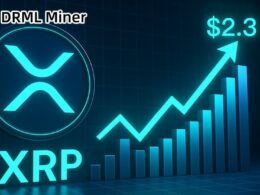As the upcoming Federal Reserve meeting approaches, one Wall Street economist is cautioning investors against becoming overly excited about the possibility of interest-rate cuts in the coming year. History has shown that the market’s predictions about the Fed’s future actions are often incorrect.
While traders may have a decent grasp of what the Fed might do at the next meeting, forecasting beyond that point is largely guesswork. Apollo Chief Economist, Torsten Slok, recently compared the futures-market pricing of expected changes in the Fed’s policy rate target with the actual movement of the fed-funds rate over time. His analysis reveals a pattern of dashed expectations, with traders being proven wrong more often than right over the past 15 years.
It is worth noting that investors correctly anticipated the start of interest-rate hikes in 2014 when former chair, and current U.S. Treasury Secretary, Janet Yellen led the way in raising borrowing costs after the 2008 financial crisis. However, these investors initially expected a more aggressive approach from the Fed, which did not materialize.
Between 2009 and 2014, traders repeatedly saw their hopes for a swift normalization of monetary policy shattered as the Fed kept rates at zero for longer than anticipated. Ultimately, the Fed chose to raise rates at a slower and more cautious pace than what many traders had predicted.
This history underscores the unpredictable nature of Federal Reserve policy. While it is crucial for investors to stay informed and aware of potential changes, placing too much faith in speculative forecasts can lead to disappointment.
Traders’ Misjudgment of Fed Policy and the Impact of COVID-19
Traders were once again caught off guard when the Federal Reserve, led by Chair Jerome Powell, began cutting interest rates for the first time since the financial crisis in the summer of 2019. The rapid decline in rates took traders by surprise, with the emergence of the COVID-19 pandemic playing a significant role in this unexpected turn of events.
In March 2022, when the Fed began raising interest rates again, the market was unprepared for the speed and magnitude of these hikes. Traders’ hopes for a policy “pivot” from the Fed have been repeatedly disappointed ever since.
Despite initially predicting rate cuts to commence around mid-next year, traders now face the risk of yet another letdown. The Fed has stated its intention to keep interest rates higher for an extended period to combat inflation, challenging traders’ expectations of a pivot.
While traders are once again speculating on a potential change in Fed policy, the central bank’s latest dot plot summary of interest-rate projections indicates that senior officials anticipate keeping the policy rate above 5% until 2025.
According to Slok, an expert in the field, when interest rates are low, the market tends to anticipate an impending rate hike by the Fed. Conversely, when rates are high, the market expects a rate cut. As Slok suggests, there is uncertainty surrounding whether the Fed will indeed reduce rates next summer or not.
For now, investors should prepare for the likelihood of higher rates being sustained for a prolonged period.
The Fed’s next decision on interest rates will be announced after its two-day November policy meeting concludes on November 1st. However, market sentiment, as reflected in CME’s FedWatch tool, overwhelmingly indicates a 99.5% probability of rates remaining unchanged next week.






